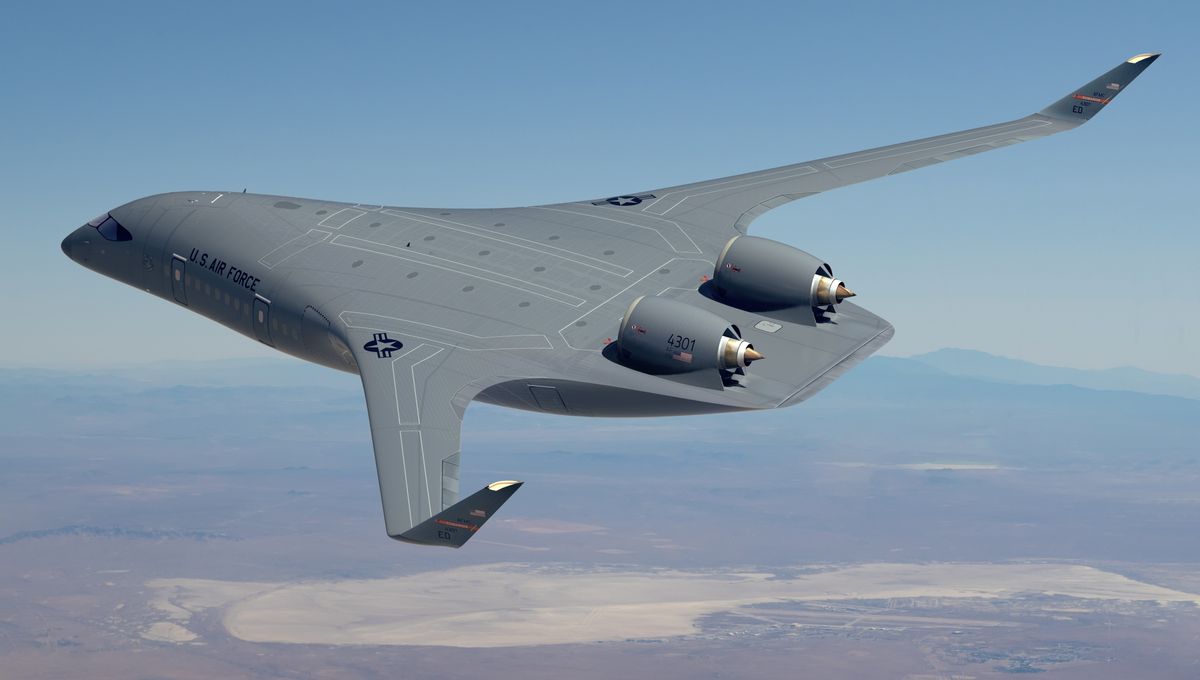
A revolutionary blended wing body (BWB) aircraft could take to the skies in as little as four years after the US Air Force selected JetZero to head up the next phase of its development program.
This will be a seriously futuristic-looking craft, but the idea of rethinking airplane design in this way is nothing new. In fact, research into the idea goes back as far as the 1920s, and the work of Russian aerodynamicist Nicolas Woyevodsky.
Based on Woyevodsky’s experiments, British manufacturer Westland constructed an early prototype called the Westland Dreadnought, whose maiden test flight sadly ended in catastrophe. Other early tests were similarly unsuccessful and the idea was shelved, only being revisited in the 1990s when NASA worked with the McDonnell Douglas Corporation, which later merged with Boeing, on flight tests of X-48 model BWB aircraft.
Advances in aeronautical engineering, design, and manufacture have now made large-scale production of BWB planes an achievable goal, and the US Air Force is keen to push its own development program to the next level and reap the potential benefits of this technology.
“Blended wing body aircraft have the potential to significantly reduce fuel demand and increase global reach,” said Secretary of the Air Force Frank Kendall in a statement. “Moving forces and cargo quickly, efficiently, and over long distance is a critical capability to enable national security strategy.”
Indeed, the Air Force says these types of large-scale transport operations account for around 60 percent of its current annual jet fuel consumption.
By blending the body of the aircraft into its high-aspect-ratio wings – distinct from the conventional tube-and-wing approach, where the fuselage is mounted on top of wings with the engines underneath – BWB designs offer increased range and efficiency. The Air Force estimates the new design could decrease drag by at least 30 percent compared with existing airplanes.
They’re likely to be greener too. JetZero says its Z-5 aircraft, for which it recently released concept art, could halve fuel burn and carbon emissions compared with conventional aircraft.
The design of the Z-5 looks similar to other types of fixed-wing craft that are currently in use, such as Northrop Grumman’s B-2 Spirit stealth bomber. The difference is the B-2 Spirit is a flying wing aircraft, meaning it has no separate fuselage – the crew, payload, and fuel are all housed within the wings themselves. The Z-5, on the other hand, will have a fuselage that blends seamlessly into its wings.
It’s not only the military that could benefit from this technology. There could also be gains for the commercial sector in a future that contains more BWB passenger and freight aircraft, from increased cabin and cargo space to decreased operational costs.
Initial flight testing of the new JetZero craft could be completed as early as 2027, so we may not have too long to wait before we see these futuristic new designs taking to the air.
Source Link: New Blended Wing Body Aircraft Could Take To The Air In Just 4 Years